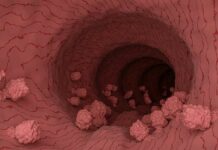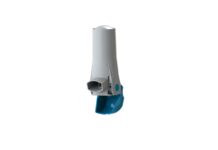Researchers at the Massachusetts Institute of Technology (MIT) have created the first fully synthetic nanoparticles that can penetrate a cell membrane without rupturing the protective membrane and thereby killing it.
Francesco Stellacci, associate Professor in the Department of Materials Science and Engineering and Darrell Irvine, the Eugene Bell Career Development Associate Professor of Tissue Engineering are the co-leaders in this field of work. The team found out that gold nanoparticles, when coated with alternating bands of two different kinds of molecule, are able to penetrate into the cells without causing harm, while those randomly coated with the same materials are not.
This discovery could work as a breakthrough in delivering oncology drugs to the targeted tumour cells. Scientists around the world have been working at delivering potent oncology drugs and other medicines to specific cells inside the body with the help of nanoscale drug delivery systems. However, till date they have been hindered in achieving the outcome. The cells, on recognising any foreign object, tend to wrap themselves around it and encase it into a small bubble to be excreted later. Hence it keeps the drug molecule from reaching the main fluid section or cystosol of the cell where it can have the optimum effect. Therefore the gold nanoparticles, with their unique feature may be helpful in changing this drug delivery phenomenon for the better.
Moreover, scientists till date have not been able to understand how biologically derived cell-penetrating materials work. Hence, as pointed out by Darrell Irvine, the striped nanoparticles may assist scientists in learning about how their biological counterparts, like peptides penetrate living cells.




















